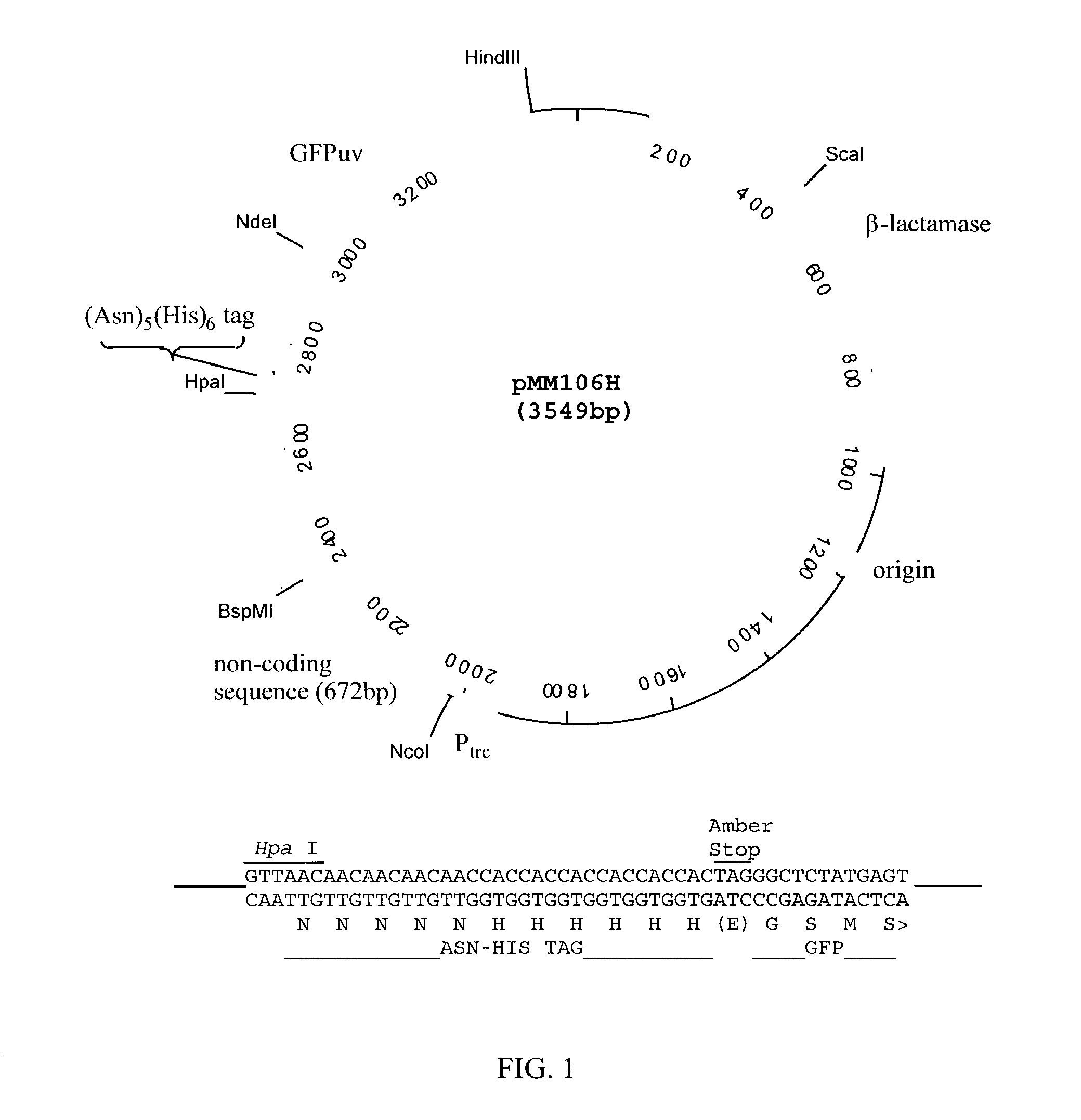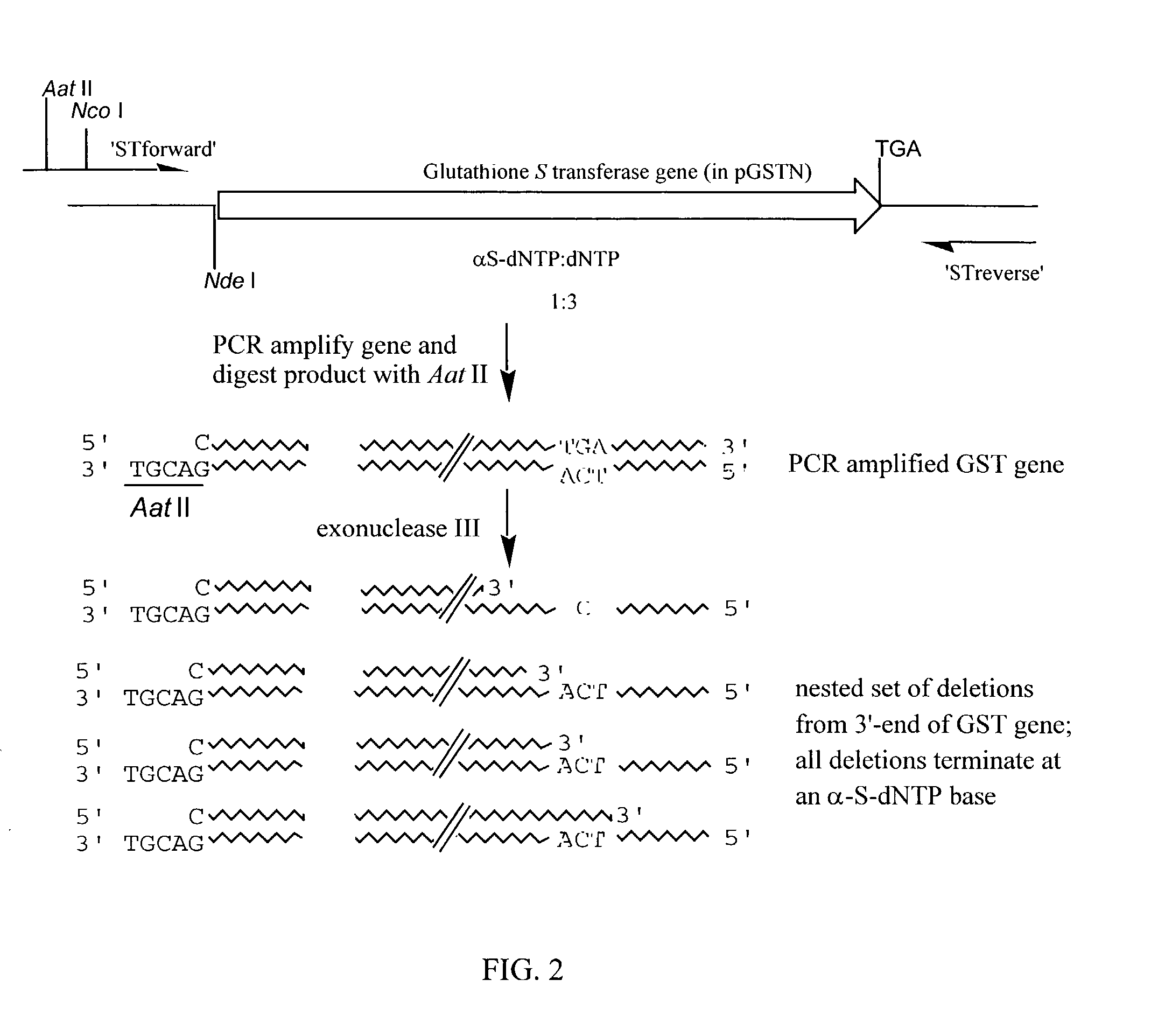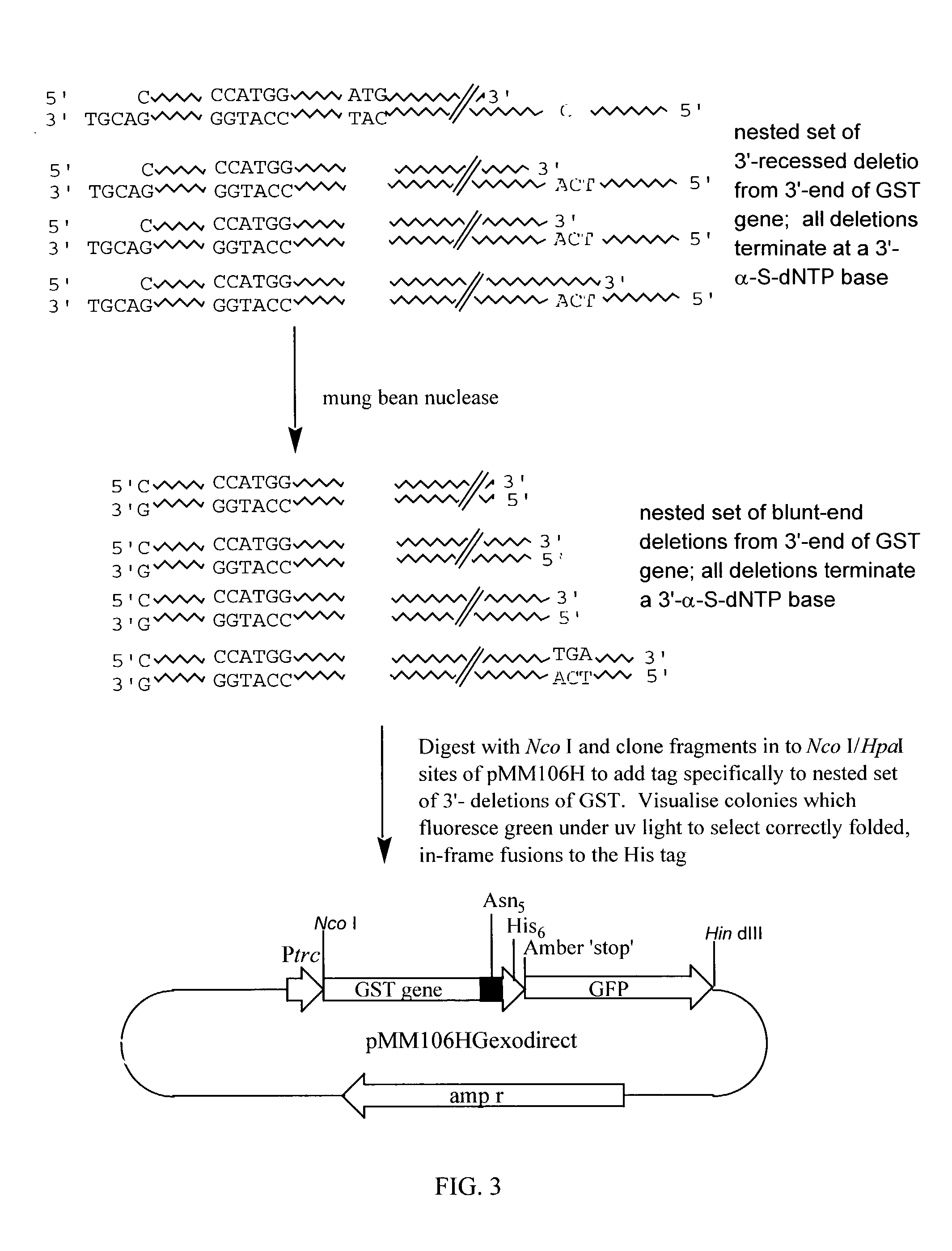Method for producing proteins tagged at the N- or C-terminus
a technology of c-terminus and protein, applied in the field of methods of producing proteins, can solve the problems of compromising the folding and function of proteins, and achieve the effect of reducing the risk of protein loss
- Summary
- Abstract
- Description
- Claims
- Application Information
AI Technical Summary
Benefits of technology
Problems solved by technology
Method used
Image
Examples
example 1
(a) Vector Construction (see FIG. 1).
[0093]The Inventors constructed a vector pMM106H derived from pUC19 which contains a strong hybrid promoter (Ptrc) to drive the expression of genes cloned into an Nco I site immediately downstream of the promoter sequence. The Inventors inserted a 676 bp nonsense DNA sequence as a stuffer fragment between the Nco I site and a downstream Hpa I site. Hpa I is a blunt-end cutter and is positioned to cleave the vector such that the downstream DNA encodes a polyasparagine, hexahistidine peptide if the reading frame is on the first base of the blunt-end. Following the hexahistidine tag is an amber stop codon (TAG) followed by the gene encoding the green fluorescent protein (GFP) of the jellyfish Aequorea victoria. The construction of pMM106H was confirmed by sequencing.
[0094]Genes cloned into pMM106H as Nco I / blunt-end fragments result in fusions to the His-tag and GFP only if the correct reading frame is created at the Hpa I site during cloning. GFP i...
example 2
(a) Vector Construction.
[0117]The Inventors constructed a second vector, pMM111, which is essentially the same as pMM106H (see Example 1), except that the 676 bp Nco I / Hpa I nonsense DNA stuffer fragment is replaced with a 300 bp Nco I / Hpa I fragment derived from the Escherichia coli gdhA gene; the Hpa I cloning site is replaced with a Sma I site, positioned such that the downstream hexahistidine tag is out of frame with the gdhA gene by 2 nucleotides; and the ATG start codon of the GFP gene is replaced with the codon for alanine (GCG). The vector has been designed such that an insert cloned into the Sma I site must contain the first nucleotide of a codon at its 3′ end to put it in frame with the hexahistidine tag and GFP. The construction of pMM111 was confirmed by sequencing.
(b) Modification Procedure to Introduce Tag.
[0118]The Inventors then carried out a procedure identical to that described in Example 1 except for the following modifications. Firstly, only α-S-dTTP was incorpor...
example 3
(a) Modification of a Second Protein Using the Hexahistidine Tag.
[0122]Following the procedure as described in Example 1 for glutathione-S-transferase, the Inventors have demonstrated that the procedure is independent of the sequence of the gene being manipulated.
[0123]Thus starting with a plasmid encoding human transcription factor NF-κB p50 and following exactly the procedure described in Example 1 unless otherwise specified, the Inventors have been able to demonstrate the modification of NF-κB p50 such that the first in-frame stop codon has been excised and replaced by an in-frame fusion to DNA encoding a polyasparagine, hexahistidine tag and GFP (when the amber stop codon is suppressed). The clones that fluoresced green, when excited with far uv light (365 nm) were further characterized. Colony Western blots using an anti-His-tag antibody allowed identification of clones expressing hexahistidine-tagged protein. The soluble protein lysates of these clones were resolved by SDS-pol...
PUM
| Property | Measurement | Unit |
|---|---|---|
| pH | aaaaa | aaaaa |
| pH | aaaaa | aaaaa |
| pH | aaaaa | aaaaa |
Abstract
Description
Claims
Application Information
 Login to View More
Login to View More - R&D
- Intellectual Property
- Life Sciences
- Materials
- Tech Scout
- Unparalleled Data Quality
- Higher Quality Content
- 60% Fewer Hallucinations
Browse by: Latest US Patents, China's latest patents, Technical Efficacy Thesaurus, Application Domain, Technology Topic, Popular Technical Reports.
© 2025 PatSnap. All rights reserved.Legal|Privacy policy|Modern Slavery Act Transparency Statement|Sitemap|About US| Contact US: help@patsnap.com



